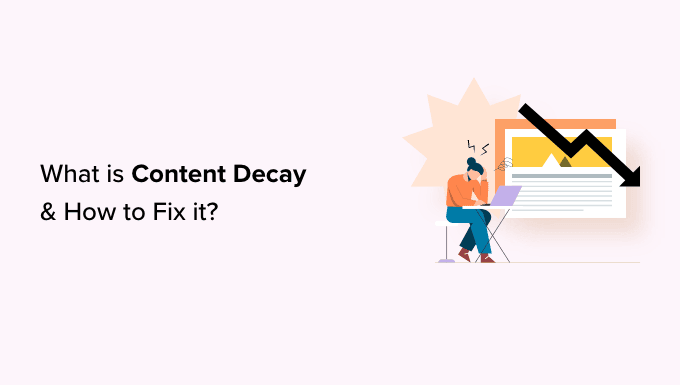Many would almost solely create new content for their clients, never touching evergreen posts and pages. This happened with blogs a lot, back in those days when quantity truly was prioritized over quality.
This practice was fundamentally wrong; it created “content decay.” In CamRojud, we make sure updating and optimizing old content is on equal footing with producing new content, and the results are fantastic and only continue to get better.
For example, earlier this year we had a commercial plumbing service customer who had a blog post that wasn’t doing very well. It had actually been written by another agency. The content itself was fine; it just lacked fundamental on-page SEO features such as header tags and internal links-broken internal links.
We redesigned the post, updated all the internal links, optimized all the SEO elements, and rewrote about 25% of the content. In four weeks, that lone blog shot to the top of the search results for the client’s target keywords and location.

This experience further sealed my thinking that, really, content decay is an issue for lots of businesses in dire need of being tackled, and inspired me to reshape our service offerings by positioning refreshing content as a key component of what we provide to our clients.
What Is Content Decay?
Content decay is when a webpage sees less and less traffic over time for a variety of factors. Algorithms change frequently, so what worked a year ago might not be working today. New competitors pop up at each turn, creating new content that appeals more to an audience’s preferences today. Plus, your own content can get outdated, or less relevant.
The trend has gone more cataclysmic with the emergence of AI-generated content, where many brands now churn out lots of volumes of material without a solid strategy to keep the material updated and relevant.
Applying the right strategies can help you fight against content decay to make sure that your content remains valuable long after it has been published.
Identifying the Signs of Content Decay
Before fixing content decay, you need to be able to recognize it. Monitor your metrics for engagement and watch for these common issues:
- Organic traffic to the specific page or post has fallen
- Drops in search engine ranking
- Outdated or no longer relevant information
- High bounce rate
- Social share decline
- Low average time on page
- Negative user feedback
Indicators that your content has been published for some time and needs refreshing to start all over again into the limelight of relevance and performance.
Strategies to Revitalize Content Decay
How can you tackle content decay and enhance user experience? Here are several effective strategies to refresh your content and keep it performing at its best.
Conduct Regular Audits of Content
Regular audits of content let you know which pages don’t work well or if some pages need to be revised. Advanced tools like GA4, Google Search Console, Ahrefs, and Semrush provide you with insights about page performance and give a clue as to what posts may do better after refreshing them.
This helps you work out the kinks in your content marketing strategy and develop your online presence. While carrying out an audit of content, be sure to consider only those metrics that are truly important, including:
- Organic traffic
- Conversion rate
- Bounce rate
- Time on page
Refresh and Update Your Already-Published Content
Bear in mind that you don’t always have to create new content. Sometimes, it is much better to update the older ones. You can ensure the best output by continuing to work on refreshing your already-published content, along with producing new material.
If you have good content that only needs a little tweaking, edit it lightly and republish it, giving it a new date. Revising content doesn’t need to be daunting.
Focus on three to five key edits that will really drive home more impact. This might mean anything from adding a few sentences to a full rewrite of sections, refreshing internal links to link to better-performing pages, and making sure those pages link back.
However you refresh your content, be it information about your company, products, or services; notice of changes; updates in statistics; or news from the industry, let Google and other search engines know that something has changed. This will allow them to crawl and index your content more effectively. Here are a few specific ideas for updated content that raise the value of knowing the newest development in your sector:
- Update outdated statistics.
- Add new data based on recent research and developments in your field.
- Avoid unnecessary information and remain with shorter sentences and paragraphs; this would provide “psychological space” and make it more readable.
- Add more visuals: images, videos, and infographics. For example, ask the company leaders to record into short videos the main points of a blog or service page. Upload via YouTube and link back to the article while embedding the video within your content. This will keep the readers on your page and also build brand loyalty.
- Ensure that the content supports current and best SEO practices, including keyword utilization and mobile-friendliness.
- Broken links are abominable to work with; therefore, ensure they are checked, detected, and fixed since they will cause frustration on the part of users and will hurt your rankings in the search engines.
- Also, take into consideration whether the information provided will still be relevant to your target audience, since the preferences of the consumer may change over time.
Revamp Old Content
Don’t let your older pieces of content just bury deep in your archives; instead, give them a new lease on life by transforming them into other forms. This will help you extend the life of your previously created content to its fullest potential. This can involve taking that blog and turning it into a video, an infographic, or even an episode of a podcast.
Repurposing the content will not only let you squeeze the most out of what you have created, but it might also increase your reach for people, too. Undoubtedly, it is one good method of breathing life into publication which can reach even more people.
Leverage User Feedback
User feedback is one of the strongest content decays one could imagine. While Google Analytics and Search Console can provide insight, comments, and social media interactions are not to be left behind.
Note what people say about your content. What do they like in your content? What do they not like? This feedback is invaluable since it helps you find out what content needs updating or refreshing.
Consider sending out surveys to your audience with questions on what topics they want to see or what kind of content they deem helpful.
Create a Content Review Schedule
Setting a schedule and sticking to it represents the best way to stay on top of your content refresh efforts. Life gets in the way, and a schedule will make sure your content doesn’t get lost in the shuffle.
For example, you might audit all of your website content on a quarterly basis and flag what needs to be refreshed. That way, you will never allow any one piece of content to get stale.
At CamRojud, we monitor on a page/post level weekly. Depending on the size of the website those producing 25 new pieces of content monthly to three pieces monthly-we overhaul older pieces on different timelines.
For example, for our comprehensive website campaign clients with over 100 web pages/posts, we revise them monthly, say five or so. For a smaller website, the pages/posts will be overhauled quarterly.
Sunsetting Content That’s Past Its Prime
While it makes much sense to keep great content up for as long as possible, not all content should live on your site forever. Sunsetting content means taking old, or irrelevant content, off of your website.
Not all content needs a refresh. If you have content that is factually incorrect, or simply no longer appeals to your target audience, then it’s often better to take it down completely.
Alternatively, clear it and set up a 301 redirect of the URL to any other appropriate page on your site.
Make Routine Content Reviews a Priority
Content decay is something quite real and happening on websites of all scales. You can bring older content to life with the several strategies regarding content decay and make it more relevant to your audience.
This does not only enhances your search engine rankings but also creates traffic going to your site. Make it a priority to routinely review your content for freshness, updates, and relevance to keep it fresh, current, and engaging.










